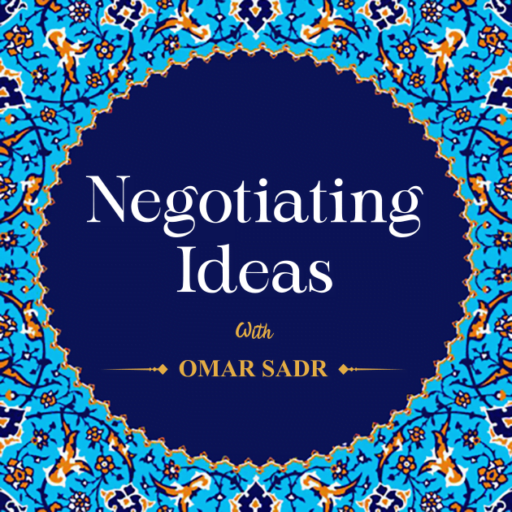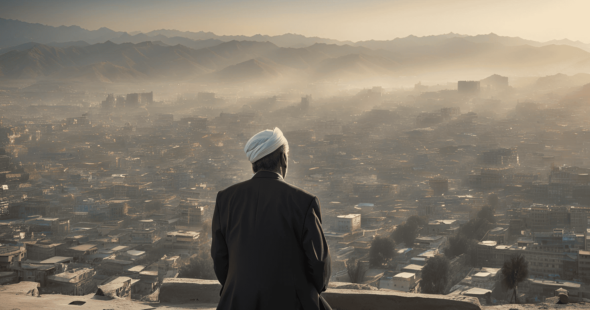The tension across Kabul was peaking as the 2014 Presidential Election dispute continued into its third month with no outcome. The city’s blunt divisions along old fault lines reminded everyone of the early nineties as they were once again being put to the test in a winner-take-all race.
The northern and western zones of the city were pitted against the eastern and southern zones. The ethnic and ideological composition was more or less clear, and Kabul’s identity politics had taken center stage once again. The dispute eventually came to an end but made clear the vulnerabilities and deep social tensions underneath the fabric of the city, more or less a reflection of national sentiment.
This is the city that I had to serve, first as Deputy Mayor and eventually as Mayor (acting). Not only was the city unequipped to resolve conflict, but it was essentially stripped of its vote in determining how it should be run. In a capital as fragile as Kabul, this leads to the smallest of issues spiraling out of control and causing conflict and violence.
Kabul’s twenty-two (22) municipal districts have distinct features and can generally be categorized across five (5) urban zones. North of Kabul a.k.a. Khair Khana, comprising Districts 11, 15, 17, and 18 populated mostly by Tajik residents and the stronghold of Jamiat-e-Islami during the Islamic State of Afghanistan (1992-1996) which was dealing with an outright civil war. East of Kabul a.k.a. Arzan Qimat and South of Kabul a.k.a. Char Asyab, populated mostly by Pashtun households and where Hezb-e-Islami used to operate. West of Kabul a.k.a. Dasht-e-Barchi, with predominantly Hazara residents and where Hezb-e-Wahdat held territory. Adjacent to it there is the Northwest a.k.a. Paghman District, which is one of the few retreats of Kabul’s more than five million residents and the headquarters of Etihad-e-Islami.
The heart of the city is where it all comes together in a metropolitan fusion of culture and politics. From the aristocratic Wazir Akbar Khan district where the political elite and the diplomatic green zone are based, Shahr-e-Naw and all the corporate headquarters of banks, Telecoms, and private companies, Karte-3 and Karte-4 with its buzzing university scene and trendy cafes to Jade Maiwand and Old Kabul with landmarks such as Koche Kharabat, Murad Khani and Reka Khana. Old Kabul city was primarily a Tajik city. This is the space where the daily economic and political struggles of the country took place, and is also where the seat of the throne is situated, the Presidential Palace.
Old Governance Model
There were two major systemic shortcomings in the urban governance structure of Kabul and as an extension all cities across the country.
First, despite having over eight hundred (800) elected sub-district representatives a.k.a. Wakil-e-Guzar across Kabul representing over five million of its residents, there was no City Council. No official platform where people of the city could oversee its expenses, voice their demands and priorities, and hold officials to any account.
On top of this, despite the fact that the constitution and the municipalities law clearly required mayors to be elected, the President continued to appoint all Mayors, Deputy Mayors, and every single Director-level position in the city government. This meant loyalties of those appointed would naturally gravitate more toward the palace and less toward the people, streets, and neighborhoods.
Therefore the governance structure not only silenced the residents by depriving them of a city council, it drastically reduced the incentive of meaningful dialogue between public officials and city representatives by not holding municipal elections.
The mayor could simply shut his door when irked by the people’s demands. This is why infrastructure investment was easily politicized, and earmarked for allies, and decided under the heavy shadow of Kabul’s identity politics.
I recall a mayor who conveniently programmed a one hundred and fifty thousand US Dollar project to draft a construction guidebook, and a close friend of his just happened to have this “expertise”. An estimated 35-40% of the city’s budget was independently programmed by the mayor with minimal oversight. About 20% of the budget required approval from the Ministry of Finance (MoF). This is where the road in front of the Minister’s house suddenly gets added to the budget, even though there are far more pressing challenges to address, such as addressing Dasht-e-Barchi’s extreme traffic congestion through building connector roads or completing the critical multimillion-dollar Wazir-Abad Canal to prevent mass flooding across Khair Khana and northern parts of the city.
Reforms: Incorporating People into Governance
I attempted a two-fold solution to bring meaningful reform. First to demonstrate the effectiveness of working with residents in rolling out initiatives and projects through greater public consultations. This strengthened people’s sense of ownership and mobilized the people to support the city during the often messy implementation phase.
Second to push legislation to commit the national government to structural changes in redefining the relationship between a city’s government and its residents. Since the mayor of Kabul sits on the national cabinet, I had the opportunity to push for these reforms in the palace but came to realize the political barriers and vested interests against major reform.
To be able to make my case for amending the municipalities law, I formalized the working relationship between the Wakil-e-Guzar and city administrators. As mayor, I sent out a municipal order giving oversight authorities on all development projects across the city, where Wakil-e-Guzar could call on the District Directors for project updates and also report any deficiencies on site. I gave them direct access to my office to discuss the wide-ranging issues of their communities from the quality of municipal service, land development, and transportation infrastructure to real estate and greenery matters. It is important to note that implementing projects across the city, be it infrastructure and development work, revenue collection, engaging the local markets and craftsmen, information collection on particular properties in land dispute cases, and most aspects of city life went through the Wakil-e-Guzars, so having them on your side makes a substantial difference.
Through this reformed relationship, we were able to address perennial eminent domain cases that were blocking some of our major transport projects, namely the demolition of hundreds of homes to allow for the expansion of the Kabul-Logar highway, the eminent domain at Dasht-e-Padola in the south of the city, disputed for over five years, which would allow the completion of Padola highway and pave the way for the development of a large planned area of over three thousand real estate units. The Qale Zaman Khan highway which would create a second highway connecting the east to the center of the city faced a similar challenge where residents refused to allow construction of the road and would not budge, this deadlock had lasted for nearly a decade, and we managed to resolve it in mere months. I decentralized the mayor’s authorities and empowered the district directors to allow for a quicker resolution to community needs.
The usual territorial disputes between the city representatives were easily managed through the new model and an agreed-upon prioritization of projects was reached. To achieve consensus and mobilize support in an urban politics as divided as Kabul is no small fiat, but applying a more egalitarian structure of governance allowed for differences and disputes to be channeled appropriately in the decision-making process and eventually resolved amicably, preventing escalation. We also managed to hit record annual revenue for the city with the increased level of participation.
I secured the Wakil-e-Guzar’s endorsement and support and appointed Kabul’s first-ever female Deputy Mayor. To include women’s voices in the decision-making layers of the city government to help reframe the city discourse, I appointed eleven female deputy district directors across the city, from Arzan Qimat to Khair Khana to Dasht-e-Barchi and all the women were welcomed by the residents and seen as one of their own.
The reason for successful reform was a bottom-up approach where residents are consulted and involved early on and their input is taken into consideration. This approach surprisingly generated a strong sense of ownership and pride in the female appointments.
The Anti-Reform Presidential Palace
My push to amend the municipalities law was welcome and some great technical work was completed in coordination with the Independent Directorate of Local Governance (IDLG) which oversaw all cities with the exception of the capital. In its preliminary drafts, we formalized the role of the City Council by introducing the Wakil-e-Guzar as the elected community representative and its oversight authority. We would essentially create a self-sustaining urban ecosystem where the city would decide its own fate, and hold accountable the city administrators, and their ability to expend their taxes and any supplementary budget. This model continues to serve billions of city-dwellers globally and would do so for cities in Afghanistan as well.
Yet, this became a point of contention among President Ashraf Ghani’s circle. Despite challenges, the final draft not only removed the Wakil-e-Guzar from the law, but interim authorities to appoint mayors and deputy mayors were introduced until an unspecified time period when the Independent Election Commission chooses to hold the municipal elections. This entrenched the status quo, strengthening those already in power and reducing public accountability.
My failure in securing legislative change meant the newfound relationship between the city and the Wakil-e-Guzar was vulnerable and subject to the whims of future mayors. Sadly, one of the first decisions of the Mayor succeeding me was to undo these reforms and return to the old ways of one individual making all the decisions. The old incentive structure meant that representatives competed against the presidential palace to gain greater favor of the mayor to pull resources towards their communities. This did not serve the city well. The public only had one option left, impede city operations as much as possible to create any pressure and leverage for their demands to be met. Mind you, these are not personal or political demands, but rather a population asking for more livable communities for their families.
Running a city of more than five million with a history of violent conflict demands a more inclusive governance model. One that moves away from a zero-sum game mentality, where development and progress in one area of the city cause resentment and backlash in others. During my time in that office, I attempted to demonstrate that such a model is feasible. I was not able to see the reform through to the end, but I hope that by briefly sharing this experience, it would serve as a reminder for others to continue striving for a more just model of governance for our cities.

